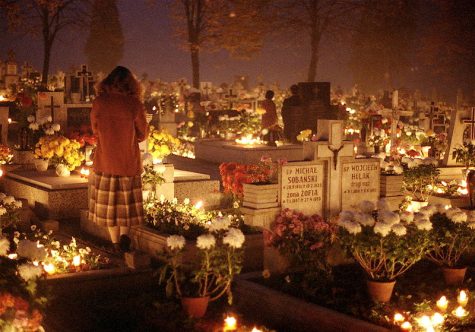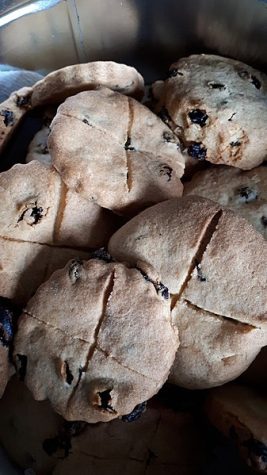The History of Halloween
We all celebrate Halloween, but do we know the origins behind it?
Passing out candy, carving pumpkins, dressing up: these are all ways we celebrate Halloween today. Halloween is a popular holiday that is celebrated every year on October 31st. It’s seen as a holiday to dress up as whatever you want and decorate with spooky skeletons and ghastly ghouls all over your place of residence. Although Halloween these days is about candy and monsters, it wasn’t always about that. Halloween has gone through many traditional changes through the decades it has existed.

According to History and Stacker, Halloween started as All Saint’s Day on November 2nd in 1000 A.D. which was a day for honoring the deceased. Eventually, it became a festival of Samhain that was celebrated every year on October 31st. They believed that the dead return to earth every year in Samhain, which is now a part of Ireland. Soon, it would spread throughout the region, and 200 years later it would spread even further after the Irish potato famine. During the 20th Century, after World War II, it would become Halloween and soon became the commercial holiday, we all know and love today.

Early traditions of this holiday included lighting bonfires, offering sacrifices, and honoring the dead. Wealthy people would pass out a baked good called “Soul Cakes” to the poor, in exchange they would pray for their dead relatives. This part of the holiday would later be taken on by children who would go to their neighbor’s door and ask for things such as money or food, leading to the creation of trick-or-treating in the Middle Ages. Other traditions of some, not wanting to meet with the ghosts from the other side, would dress up in animal skins to keep them away as well as leaving food out to please the unwelcomed guests. This would be incorporated into later traditions as seen today.
In the 20th century, Halloween’s old traditions were picked up by the U.S. and popularized once again. In the 1920s, however, some people would use this as more of an opportunity to trick than to treat. As the Great Depression came around, it would worsen the problem, which led to trick-or-treating becoming a community tradition guided by adults and people of status in communities in the 1930s. Although there was a bit of a drop during the second World War due to the sugar rationing, there would be an increase after the baby boom. This increase would soon skyrocket the tradition to becoming a common household practice.
Over the centuries, Halloween has changed and grown as a tradition. It started as All Hallows Eve before becoming common traditions such as Halloween and Dia de Los Muertos. The traditions of dressing up and handing out candy has still been passed along and modernized throughout the years, and hopefully it will continue to do so with newer traditions as well. The history as well continues to grow as the holiday ages, going from being a religious holiday to becoming more commercialized. Although it will most likely continue to be a commercial holiday, most seem to hope that Halloween continues to be popular throughout the years.


